
To the lecture of Laurent Stalder and Adam Carus
After a holiday break, the first Thursday of October marked the start of the autumn lecture series by professors from ETH Zurich. Enthusiasts of quality architecture formed a queue in front of the Světozor cinema as if Enrico Caruso were coming to sing. This time, however, the francophone duo Adam Caruso and Laurent Stalder arrived. Both Swiss professors have a connection to Canada. Adam Caruso was born and educated in Montreal, Canada, while Laurent Stalder taught history at the University of Quebec for nine years. The original plan to divide the evening into two forty-minute lecture blocks was delayed by initial technical complications.
Laurent Stalder, a professor of history and theory of architecture at ETH, attempted a historical excursus to find out whether traces of national identity can be detected in Swiss architecture, which seems almost impossible in such a heterogeneous state. This small country, where several official languages are spoken and offers rich landscape views, ultimately appears that building can primarily be based on the atmosphere (Ambiente-Stimmung-Atmosphere) of the place.
Canadian architect Adam Caruso, in his lecture titled 'The Deception of Modernism,' presented his two recent realizations to the Prague audience: the renovation of the historic Tate Britain museum building, which he completed last year after six years of effort, and the administrative complex Auropaallee near Zurich's main train station. Before that, however, he showed almost unknown examples of his teaching activities at ETH, where he does not design new buildings with his students but instead seeks to capture the 'Nature of Space' through charcoal drawings, giant models, and unedited photographs. He creates models of masterful buildings and those of bygone times, drawing their atmosphere. They seek the quality of places even where one would least expect it. At the same time, they focus on publishing authors who stood outside the mainstream modernists of the 20th century, such as the French architect Fernand Pouillon or the Italian architects Mario Asnago and Claudio Vender.
Due to the focus on activities at ETH, Caruso had even less time to present his London office, which has successfully resisted the dictates of modernity. The audience certainly deserved to see more than just two projects from the twenty-four-year professional career of the Caruso St John studio. Thus, the lecture was more of a tasting of a traditional way of viewing architecture. Filled with impressions, I immediately reached for Caruso's book 'The Feelings of Things', published six years ago, and recalled several notes that there was no time for the previous evening. Caruso admits that he would like to design with as much erudition and insight as K. F. Schinkel, P. Webb, or A. Loos. Although their work was quite eclectic, it advanced architecture significantly. Caruso mentions Adolf Loos in his book at several points, highlighting his critical, erudite, yet publicly accessible texts defining the role of the architect at the beginning of the 20th century. We might need to ask such questions again after a hundred years.
Circle Report:
On Thursday, October 2, as part of the lecture series SWISS-CZECH INSPIRATIONS, there was great public interest (the Světozor cinema was fully packed) ADAM CARUSO, the award-winning London architect and author of the new face of Tate Britain, and architecture theorist LAURENT STALDER, spoke. Both share an interest in connecting the old with the new and a concern for context.
ADAM CARUSO, in his lecture 'The Deception of Modernism,' showed the audience all the "layers" of his work.
He introduced himself as a professor of architecture at the prestigious ETH in Zurich. He presented student works that involved models at various scales and photographed them in such a way that it is unclear whether they are reality or models. He also highlighted his publishing activities, with the goal of reviving the works of forgotten architects - such as Fernand Pouillon and others, whose buildings he believes are timeless and could still be built today.
For Caruso, his own design work is crucial; this time he focused on two projects: Europaallee in Zurich: the studio Caruso St John Architects won a competition to revitalize the areas around Zurich's central train station. A new commercial and residential zone has emerged on 30,000 square meters. Caruso drew inspiration here from the first office buildings, which were essentially palaces, and the early New York skyscrapers. Another significant project is the award-winning renovation of Tate Britain, which works with a new connection to and release of the historical building. A significant emphasis on detail is characteristic of Caruso. The architect also designed furniture, drawing inspiration from the period.
LAURENT STALDER, a professor of history and theory of architecture at ETH Zurich, in his lecture Neither Old nor New. The Search for Autonomous Architecture addressed the current topic of contemporary architectural theory and practice: connecting the old with the new. Stalder provided a comprehensive overview of Swiss architecture. He presented it as architecture highlighting local context, simplicity, natural materials, and the merging of new and old forms without external effects following the teachings of the analogical school. As architecture connected to "atmospheres" and the surrounding nature.
Attendance at the lecture: approx. 450 (architects, architecture students, the public, representatives of IPR, etc.).
Laurent Stalder, a professor of history and theory of architecture at ETH, attempted a historical excursus to find out whether traces of national identity can be detected in Swiss architecture, which seems almost impossible in such a heterogeneous state. This small country, where several official languages are spoken and offers rich landscape views, ultimately appears that building can primarily be based on the atmosphere (Ambiente-Stimmung-Atmosphere) of the place.
Canadian architect Adam Caruso, in his lecture titled 'The Deception of Modernism,' presented his two recent realizations to the Prague audience: the renovation of the historic Tate Britain museum building, which he completed last year after six years of effort, and the administrative complex Auropaallee near Zurich's main train station. Before that, however, he showed almost unknown examples of his teaching activities at ETH, where he does not design new buildings with his students but instead seeks to capture the 'Nature of Space' through charcoal drawings, giant models, and unedited photographs. He creates models of masterful buildings and those of bygone times, drawing their atmosphere. They seek the quality of places even where one would least expect it. At the same time, they focus on publishing authors who stood outside the mainstream modernists of the 20th century, such as the French architect Fernand Pouillon or the Italian architects Mario Asnago and Claudio Vender.
Due to the focus on activities at ETH, Caruso had even less time to present his London office, which has successfully resisted the dictates of modernity. The audience certainly deserved to see more than just two projects from the twenty-four-year professional career of the Caruso St John studio. Thus, the lecture was more of a tasting of a traditional way of viewing architecture. Filled with impressions, I immediately reached for Caruso's book 'The Feelings of Things', published six years ago, and recalled several notes that there was no time for the previous evening. Caruso admits that he would like to design with as much erudition and insight as K. F. Schinkel, P. Webb, or A. Loos. Although their work was quite eclectic, it advanced architecture significantly. Caruso mentions Adolf Loos in his book at several points, highlighting his critical, erudite, yet publicly accessible texts defining the role of the architect at the beginning of the 20th century. We might need to ask such questions again after a hundred years.
Circle Report:
On Thursday, October 2, as part of the lecture series SWISS-CZECH INSPIRATIONS, there was great public interest (the Světozor cinema was fully packed) ADAM CARUSO, the award-winning London architect and author of the new face of Tate Britain, and architecture theorist LAURENT STALDER, spoke. Both share an interest in connecting the old with the new and a concern for context.
ADAM CARUSO, in his lecture 'The Deception of Modernism,' showed the audience all the "layers" of his work.
He introduced himself as a professor of architecture at the prestigious ETH in Zurich. He presented student works that involved models at various scales and photographed them in such a way that it is unclear whether they are reality or models. He also highlighted his publishing activities, with the goal of reviving the works of forgotten architects - such as Fernand Pouillon and others, whose buildings he believes are timeless and could still be built today.
For Caruso, his own design work is crucial; this time he focused on two projects: Europaallee in Zurich: the studio Caruso St John Architects won a competition to revitalize the areas around Zurich's central train station. A new commercial and residential zone has emerged on 30,000 square meters. Caruso drew inspiration here from the first office buildings, which were essentially palaces, and the early New York skyscrapers. Another significant project is the award-winning renovation of Tate Britain, which works with a new connection to and release of the historical building. A significant emphasis on detail is characteristic of Caruso. The architect also designed furniture, drawing inspiration from the period.
LAURENT STALDER, a professor of history and theory of architecture at ETH Zurich, in his lecture Neither Old nor New. The Search for Autonomous Architecture addressed the current topic of contemporary architectural theory and practice: connecting the old with the new. Stalder provided a comprehensive overview of Swiss architecture. He presented it as architecture highlighting local context, simplicity, natural materials, and the merging of new and old forms without external effects following the teachings of the analogical school. As architecture connected to "atmospheres" and the surrounding nature.
Attendance at the lecture: approx. 450 (architects, architecture students, the public, representatives of IPR, etc.).
The English translation is powered by AI tool. Switch to Czech to view the original text source.
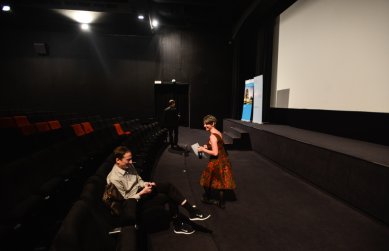
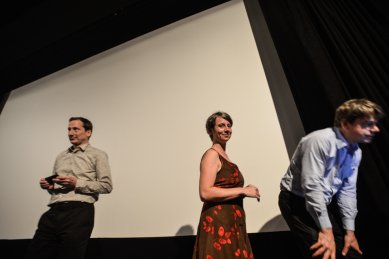
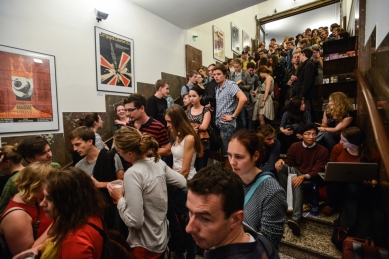
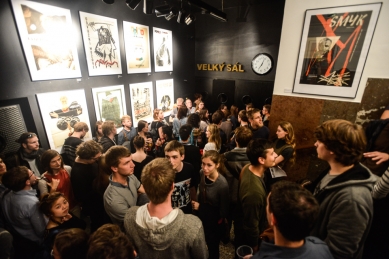

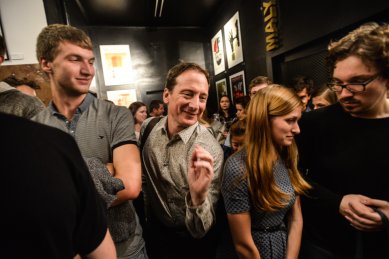
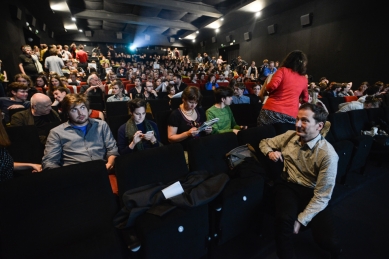
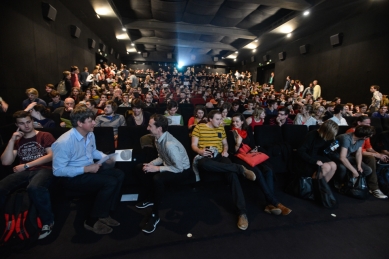
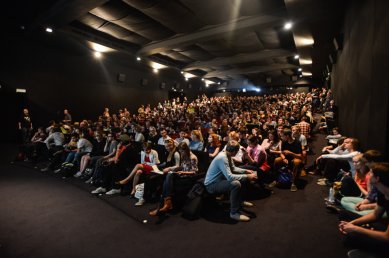
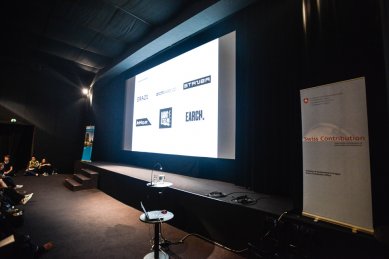

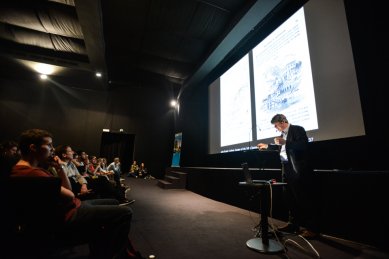
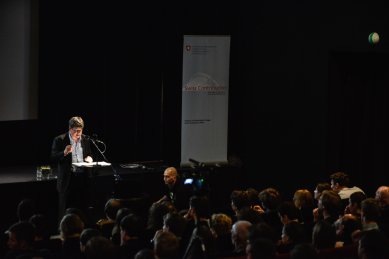
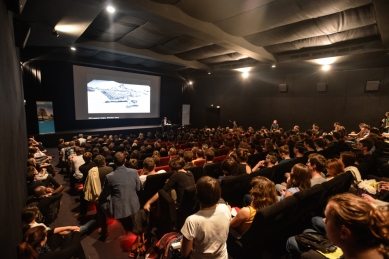
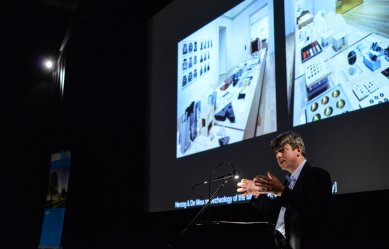
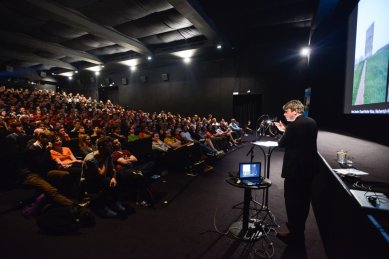
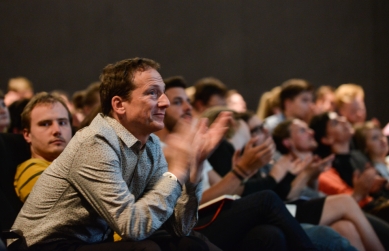


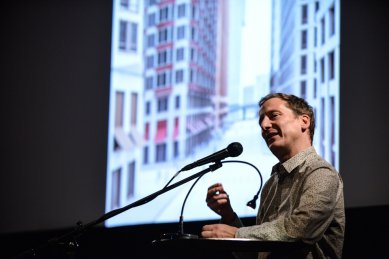


0 comments
add comment











